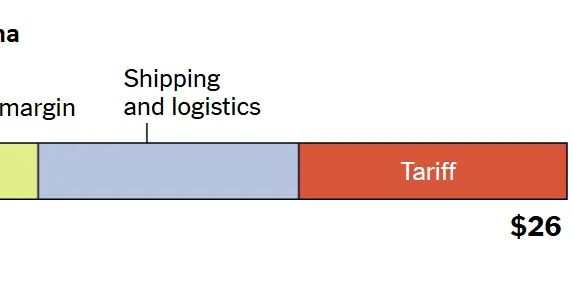MEDIAN
The median is the middle value of the data when the data is put in order from smallest to largest. Half of the values are less than the median and half are greater.
For the dot plot of 25 polls which asked about respondents’ views on tariffs, the median polling result is 41 percent. With 25 data points, the middle data point is the 13th. Half of the polls showed that the percentage of respondents who supported tariffs was less than or equal to 41 percent and half of the polls had support of tariffs less than or equal to 41 percent.
BIAS vs STATISTICAL BIAS
Bias is the tendency to favor one thing over another. Statistical bias is the tendency of a statistic to overestimate or underestimate the actual value of a population characteristic of interest. Statistical bias may be caused by factors involved in the study design and in the data collection.
In the four Share of Americans in Favor of Tariffs bar charts, the statistical bias, in part, relates to the wording of the tariff question. There may also be bias by how the poll was conducted, when it was conducted, how the sample was collected and other reasons.
The graph for “What’s Going On in This Graph?” was selected in partnership with Sharon Hessney. Ms. Hessney wrote the “reveal” and Stat Nuggets with Erica Chauvet, a mathematics professor at Waynesburg University in Pennsylvania, and moderates online with Lydia Butters, a math and data science teacher at Cedar Falls High School in Iowa.
More?
• See all graphs in this series or collections of 75 of our favorite graphs, 28 graphs that teach about inequality and 24 graphs about climate change.
• View our archives that link to all past releases, organized by topic, graph type and Stat Nugget.
• Learn more about the notice and wonder teaching strategy from this 5-minute video and how and why other teachers are using this strategy from our on-demand webinar.
• Sign up for our free weekly Learning Network newsletter so you never miss a graph. Graphs are always released by the Friday before the Wednesday live moderation to give teachers time to plan ahead.
• Go to the American Statistical Association K-12 website, which includes teacher statistics resources, Census in the Schools student-generated data, professional development opportunities, and more.
Students 13 and older in the United States and Britain, and 16 and older elsewhere, are invited to comment. All comments are moderated by the Learning Network staff, but please keep in mind that once your comment is accepted, it will be made public.
